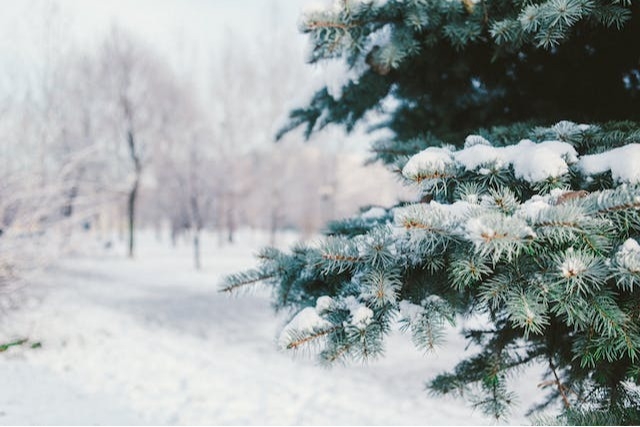Common Fall and Winter Tree Care Myths Debunked
Keeping your trees in good condition can easily seem like a task best left to the warmer months. And while your tree care efforts should take priority during the spring and summer, leaving your trees to their own devices during the colder months isn’t always the best idea. Unfortunately, there are a lot of myths and misconceptions surrounding fall and winter tree and plant health care and those myths can leave you neglecting trees that could benefit from your help. Here are a few of the most common myths and why they’re wrong.
You Can’t Prune or Trim Your Trees in Fall
Tree trimming and pruning is essential for your trees’ health and your property’s safety. Though it’s most often done during the growing season, there may be times when trimming your trees during the fall and winter months can be a better option. Once the leaves fall, your tree care team is better able to see the full canopy and assess the different risk factors for the tree. This allows them to identify limbs that are creating strain or potentially carrying an infestation that could threaten the health of the tree in the spring.
Your Trees Are Completely Dormant and Won’t Need Water
Many trees planted in the greater Denver area will go dormant during the winter. This means they’re not producing new growth at the same rate as they do during the growing season. But that dormancy doesn’t necessarily mean that your trees can go for months on end without water.
During wet winters, your trees will likely get all the moisture they need from rain and snowmelt. But during dryer and warmer winters, you may need to water your trees every once in a while. The exact water requirements will vary depending on the species you have in your yard, but your plant health care team can help you determine an appropriate schedule.
Insects and Pests Aren’t a Problem Once the Temps Drop
Cold weather may kill unwanted insects like mosquitoes and flies, but it doesn’t mean your trees are safe. Unfortunately, some insects, pests, and fungi won’t stop their destructive activity just because the temperatures have dropped. Emerald ash borers, pine beetles, and other similar pests burrow into the bark of the tree where they’re insulated and protected from the elements. This allows them to continue hurting your tree and spreading the harmful fungi that can lead to premature death.
That’s why it’s still important to get your trees inspected during the fall. If your tree care team notices any signs of distress, they may be able to remove the damaged portion of the tree before the growing season is in full swing.
Give Your Trees the TLC They Deserve
Keeping your trees in good condition means caring for them during the fall and winter. If you’re not sure where to start or know that the trees on your property could use a little extra help to prepare for the growing season, don’t panic. Contact Root Tree Service today to schedule a consultation with our experienced plant health care team.
Go Back You Can’t Prune or Trim Your Trees in Fall
Tree trimming and pruning is essential for your trees’ health and your property’s safety. Though it’s most often done during the growing season, there may be times when trimming your trees during the fall and winter months can be a better option. Once the leaves fall, your tree care team is better able to see the full canopy and assess the different risk factors for the tree. This allows them to identify limbs that are creating strain or potentially carrying an infestation that could threaten the health of the tree in the spring.
Your Trees Are Completely Dormant and Won’t Need Water
Many trees planted in the greater Denver area will go dormant during the winter. This means they’re not producing new growth at the same rate as they do during the growing season. But that dormancy doesn’t necessarily mean that your trees can go for months on end without water.
During wet winters, your trees will likely get all the moisture they need from rain and snowmelt. But during dryer and warmer winters, you may need to water your trees every once in a while. The exact water requirements will vary depending on the species you have in your yard, but your plant health care team can help you determine an appropriate schedule.
Insects and Pests Aren’t a Problem Once the Temps Drop
Cold weather may kill unwanted insects like mosquitoes and flies, but it doesn’t mean your trees are safe. Unfortunately, some insects, pests, and fungi won’t stop their destructive activity just because the temperatures have dropped. Emerald ash borers, pine beetles, and other similar pests burrow into the bark of the tree where they’re insulated and protected from the elements. This allows them to continue hurting your tree and spreading the harmful fungi that can lead to premature death.
That’s why it’s still important to get your trees inspected during the fall. If your tree care team notices any signs of distress, they may be able to remove the damaged portion of the tree before the growing season is in full swing.
Give Your Trees the TLC They Deserve
Keeping your trees in good condition means caring for them during the fall and winter. If you’re not sure where to start or know that the trees on your property could use a little extra help to prepare for the growing season, don’t panic. Contact Root Tree Service today to schedule a consultation with our experienced plant health care team.
